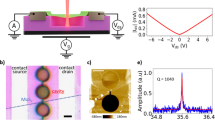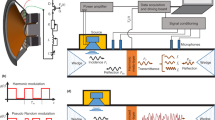Abstract
WHEN two notes are sounded together, the listener may hear in addition other notes which are not overtones of either of the originals. Theyare combination tones, the frequencies of which are linear algebraic functions of the primaries. Let us denote the latter by m and n. The most powerful combination tone has a frequency equal to the difference between m and n: a note of frequency m + n is much more difficult to observe. There may be notes of other frequencies, m + 2n, 2m + n … but these are weaker still. A full description of the effect is given by Jeans in “Science and Music”, p. 287 et seq. It is possible to make experimental arrangements by which the existence of combination tones may be plainly demonstrated. Some of these arrangements are described in the present note.
This is a preview of subscription content, access via your institution
Access options
Subscribe to this journal
Receive 51 print issues and online access
$199.00 per year
only $3.90 per issue
Buy this article
- Purchase on SpringerLink
- Instant access to full article PDF
Prices may be subject to local taxes which are calculated during checkout
Similar content being viewed by others
References
Hazel, Phil. Mag., 19, 103 (1935).
Rights and permissions
About this article
Cite this article
BRAGG, W. Combination Tones in Sound and Light*. Nature 143, 542–545 (1939). https://doi.org/10.1038/143542a0
Issue date:
DOI: https://doi.org/10.1038/143542a0



